Address
Office Address
Shop No-01 Lucia City Center, OTC RoadNear Shardha Theater SP Road, Bangalore-560002
Work Hours
Monday to Saturda: 7AM - 7PM
Weekend: 10AM - 5PM
Address
Shop No-01 Lucia City Center, OTC RoadNear Shardha Theater SP Road, Bangalore-560002
Work Hours
Monday to Saturda: 7AM - 7PM
Weekend: 10AM - 5PM


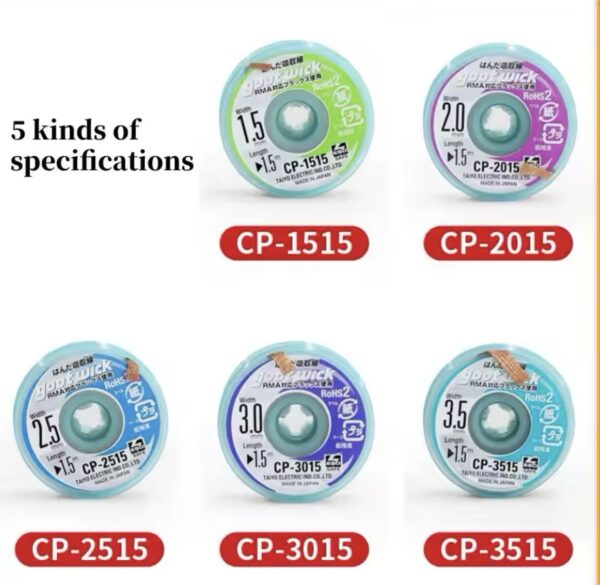
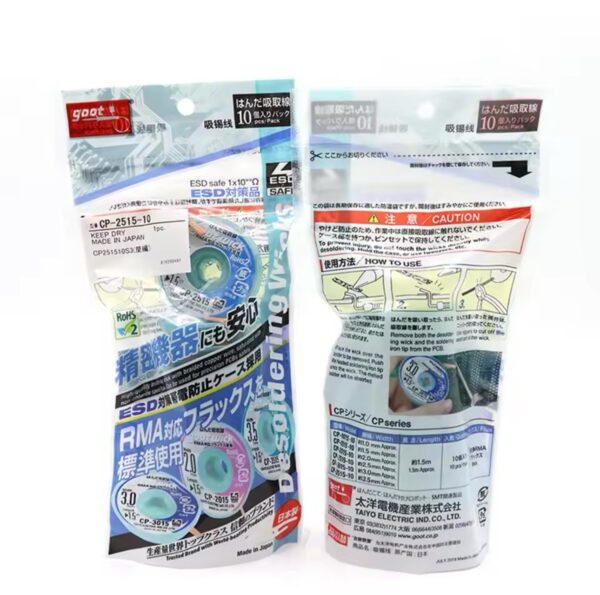
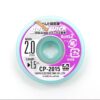


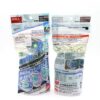
Original price was: ₹150.₹110Current price is: ₹110.
Desoldering Solder Wick 2.0mm CP-2015 Copper Soldering Wire is a critical process in the realm of electronics repair and modification. It refers to the removal of solder from an electrical connection, allowing components to be replaced or repositioned on printed circuit boards (PCBs). Understanding desoldering is essential for anyone involved in electronics, as it enhances the ability to repair faulty components, upgrade systems, or repurpose old circuit boards for new applications. Desoldering Solder Wick 2.0mm CP-2015 Copper Soldering Wire
At its core, soldering and desoldering are two complementary processes. Soldering involves melting solder to join electronic components together, whereas desoldering is the skill of reversing that process. This skill becomes necessary when a component fails, is incorrectly placed, or requires upgrading. The choice to desolder components can stem from a variety of reasons, including the need for enhanced performance, obsolescence of technology, or individual customization demands. Desoldering Solder Wick 2.0mm CP-2015 Copper Soldering Wire
The significance of using the right tools and techniques cannot be overstated in the desoldering process. One of the most effective tools is the solder wick, which is typically made from braided copper and is designed to absorb molten solder. The 2.0mm CP-2015 Copper Solder Wick is particularly noted for its effectiveness in quickly desoldering connections while minimizing potential damage to the PCB. By placing the solder wick over the solder joint and applying heat with a soldering iron, the solder is drawn into the wick, leaving a clean and solder-free pad. Desoldering Solder Wick 2.0mm CP-2015 Copper Soldering Wire
Employing appropriate desoldering techniques, alongside high-quality tools such as the solder wick, ensures a more successful and less stressful experience. Mastering desoldering is not just a valuable skill for technicians; it allows enthusiasts and hobbyists to navigate the sophisticated challenges posed by modern electronics with confidence. Desoldering Solder Wick 2.0mm CP-2015 Copper Soldering Wire
The 2.0mm CP-2015 copper solder wick is meticulously designed for efficient solder absorption and is characterized by its distinctive specifications that enhance its usability in electronic repair and manufacturing. Primarily crafted from high-grade copper, this solder wick provides excellent thermal conductivity, enabling quick and effective heat transfer during the desoldering process. The copper material not only ensures durability but also delivers superior performance compared to other materials, such as brass or steel, which may not perform as efficiently due to lower thermal properties. Desoldering Solder Wick 2.0mm CP-2015 Copper Soldering Wire
One of the key specifications to note is the thickness of the CP-2015 wick. With a width of 2.0mm, it strikes a balance between flexibility and sturdiness, allowing users to maneuver it easily while still maintaining sufficient strength to remove solder efficiently. The appropriate thickness is essential as it maximizes contact with the solder joint, ensuring that heat is evenly distributed and excess solder is effectively lifted away. Desoldering Solder Wick 2.0mm CP-2015 Copper Soldering Wire
Moreover, the absorption capabilities of the CP-2015 wick are noteworthy. Enhanced by its capillary action, the solder wick can absorb excess solder quickly, which is crucial in preventing damage to delicate components during desoldering. This feature is further amplified by the wick’s ability to handle various types of solder, including lead-free options, making it versatile within different soldering applications. The effectiveness of copper solder wick in removing unwanted solder not only streamlines the repair process but also reduces the likelihood of shorts or other electrical failures, which can greatly impact the performance and longevity of electronic devices. Desoldering Solder Wick 2.0mm CP-2015 Copper Soldering Wire
In conclusion, the 2.0mm CP-2015 copper solder wick stands out due to its material composition, thickness, and exemplary absorption capabilities, thereby making it an essential tool for electronic technicians looking for precision and reliability in their desoldering tasks. Desoldering Solder Wick 2.0mm CP-2015 Copper Soldering Wire
Desoldering components from a printed circuit board (PCB) can be a challenging task, but with the right tools and techniques, it can be accomplished effectively. The 2.0mm CP-2015 copper solder wick is a valuable component in the process of desoldering. To successfully utilize solder wick, one must begin with the necessary tools which include a soldering iron, the solder wick itself, tweezers, a cleaning brush, and safety goggles to ensure protection during desoldering. Desoldering Solder Wick 2.0mm CP-2015 Copper Soldering Wire
Preparation is key before starting the desoldering process. First, ensure the workspace is clean and well-lit. Wear safety goggles to protect your eyes from any solder splatter. Next, unplug the device you’re working on to prevent any electrical hazards. It is advisable to have a damp sponge or cloth nearby for cleaning the soldering iron tip periodically, ensuring optimal heat transfer. Desoldering Solder Wick 2.0mm CP-2015 Copper Soldering Wire
To begin the desoldering process with solder wick, place the wick over the solder joint you wish to remove. It’s crucial to position the wick correctly, allowing it to cover not just the solder but also the pad of the PCB. Turn on your soldering iron and allow it to reach the appropriate temperature, typically around 350 degrees Celsius. Gently place the tip of the soldering iron on top of the solder wick. The heat from the iron will melt the solder, drawing it into the wick through capillary action. Desoldering Solder Wick 2.0mm CP-2015 Copper Soldering Wire
Maintain the heat for a brief period, about two to three seconds, and monitor the absorption of the solder. Once enough solder has been absorbed, remove the soldering iron and allow the wick to cool slightly before lifting it away, which may help prevent damage to the PCB pad. For areas that require additional attention, you may need to repeat the process. This method not only promotes precise desoldering but also minimizes the risk of damaging surrounding components. Desoldering Solder Wick 2.0mm CP-2015 Copper Soldering Wire
Desoldering with 2.0mm CP-2015 copper solder wick is generally a straightforward process, yet there are several common issues that may arise during usage. Understanding these challenges and knowing how to troubleshoot them can significantly enhance the experience. One frequent problem is insufficient solder absorption. This can occur if the solder wick is not properly positioned over the solder joint or if the soldering iron tip isn’t adequately heated. To address this, ensure that the wick is in direct contact with both the solder and the PCB pad, and allow the soldering iron to remain in contact with the wick for just enough time to melt the solder without prolonged exposure that may damage the components. Desoldering Solder Wick 2.0mm CP-2015 Copper Soldering Wire
Another common issue is a burnt wick, which can result from excessive heat. When the copper wick is exposed to high temperatures for too long, it can char, rendering it ineffective. To prevent this, it is essential to monitor the soldering iron’s temperature settings and avoid prolonged contact. If a burnt wick is encountered, the best course of action is to discard it and use a new length, ensuring all safety measures are observed during the process. Desoldering Solder Wick 2.0mm CP-2015 Copper Soldering Wire
Damage to electronic components can also occur during desoldering. If too much heat is applied or if the solder wick is improperly handled, there is a risk of lifting pads or damaging traces. To minimize such risks, it’s advisable to work with precision, applying just enough heat to the solder joint for effective absorption by the wick. Using a desoldering pump in conjunction with solder wick can also enhance the removal process and reduce potential damage. Desoldering Solder Wick 2.0mm CP-2015 Copper Soldering Wire
In conclusion, by recognizing these common problems and implementing practical solutions, individuals can enhance their desoldering skills with 2.0mm CP-2015 copper solder wick and ensure more successful outcomes in their electronic repair projects. Desoldering Solder Wick 2.0mm CP-2015 Copper Soldering Wire
Desoldering is a critical skill in the field of electronics repair, significantly influencing the quality and longevity of electronic devices. Throughout this blog post, we have explored the essential techniques necessary for effective desoldering, with a focus on the benefits of utilizing 2.0mm CP-2015 copper solder wick. This specific solder wick is designed to absorb excess solder efficiently, thereby minimizing the risk of damaging sensitive components during the desoldering process. Desoldering Solder Wick 2.0mm CP-2015 Copper Soldering Wire
To foster a safe and effective environment for desoldering, adhering to best practices is paramount. First, it is essential to maintain your tools properly; clean soldering irons and well-maintained solder wicks contribute to a smoother desoldering experience. Always ensure your workspace is organized and free of clutter, which aids in reducing the chances of accidental damage or injury. Additionally, wearing safety goggles and using appropriate ventilation when working with solder can help protect you from harmful fumes and accidental splashes. Desoldering Solder Wick 2.0mm CP-2015 Copper Soldering Wire
Moreover, understanding and practicing the correct temperature settings for your soldering iron is crucial. Too high a temperature can damage components, while too low may not remove all solder effectively. It is advisable to experiment with different settings to find what works best for your specific projects. Desoldering Solder Wick 2.0mm CP-2015 Copper Soldering Wire
For those looking to deepen their knowledge and expertise in soldering and desoldering, various resources are available. Books, online courses, and forums dedicated to electronics repair can offer valuable insights and community support. Engaging with fellow enthusiasts can further enhance your learning experience, providing practical tips and shared knowledge from personal experiences with tools like the CP-2015 copper solder wick. Desoldering Solder Wick 2.0mm CP-2015 Copper Soldering Wire
In conclusion, mastering the art of desoldering is an ongoing journey, and by employing the techniques discussed and adhering to best practices, one can ensure successful outcomes in all future electronics repair projects. Desoldering Solder Wick 2.0mm CP-2015 Copper Soldering Wire
More Products : https://gsmtoolsindia.com/
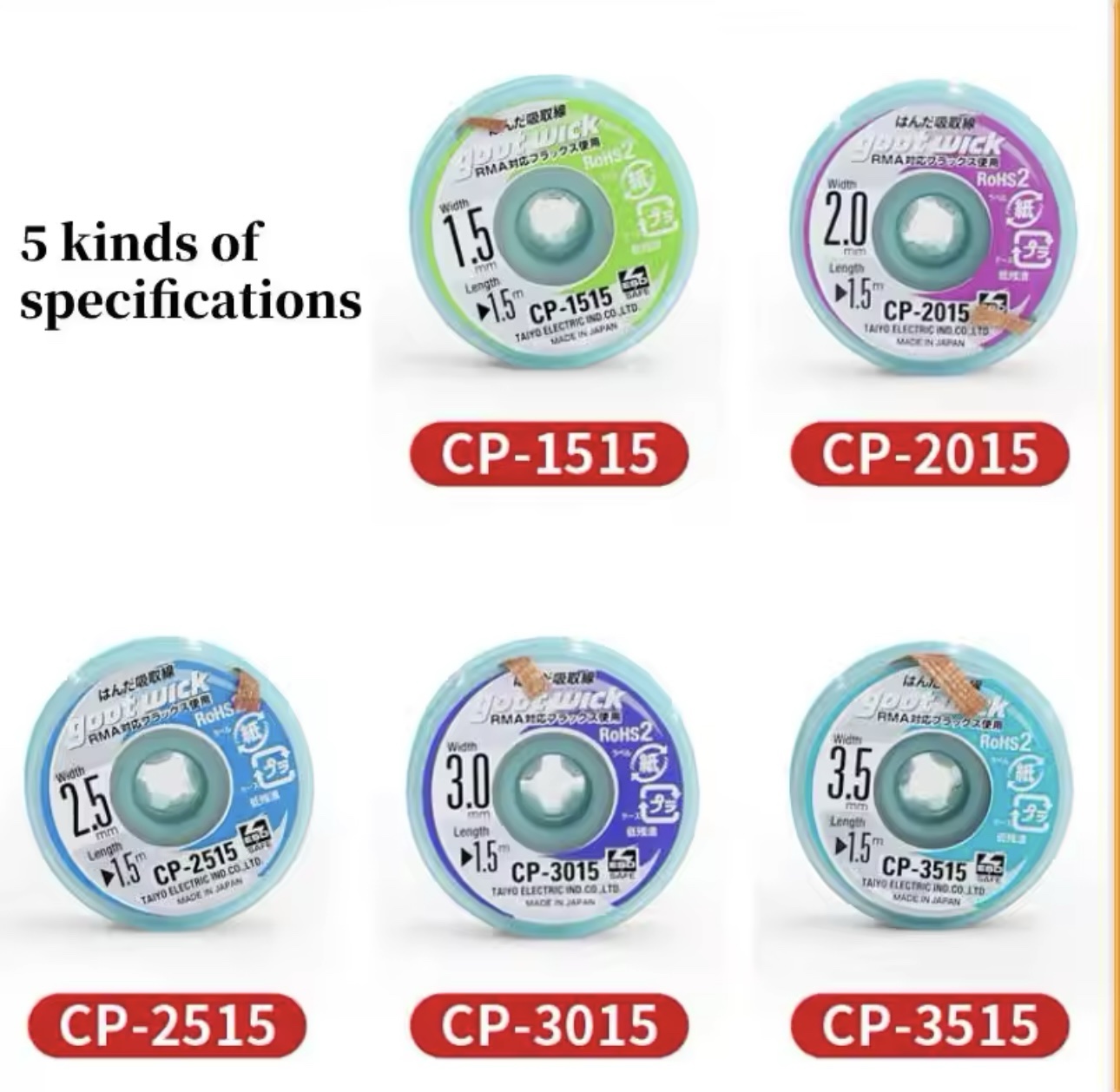
Reviews
There are no reviews yet.